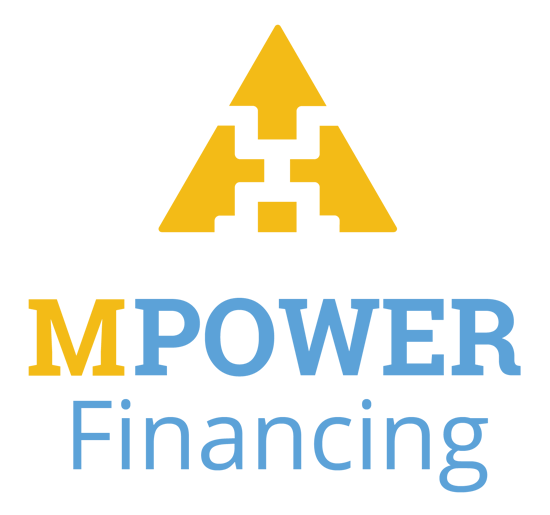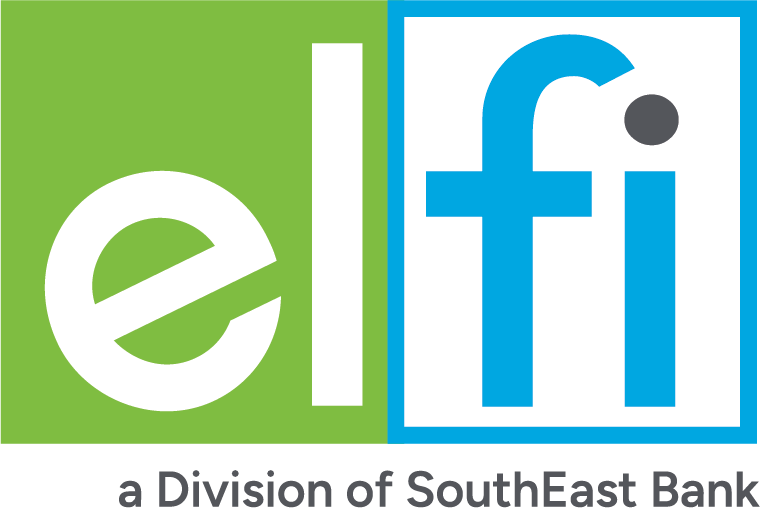College-Bound Students Could Face $37,200 in Loans. Here’s How to Ease the Load
It's unclear what campuses will look like this fall, but students will still depend on loans to pay for college.

Many, or all, of the products featured on this page are from our advertising partners who compensate us when you take certain actions on our website or click to take an action on their website. However, this does not influence our evaluations. Our opinions are our own. Here is a list of our partners and here's how we make money.
A 2020 high school graduate who depends on student loans for college could expect to borrow $37,200 in pursuit of a bachelor’s degree, according to NerdWallet analysis.
It’s unclear if and how the pandemic and resulting economic fallout could affect college enrollment numbers and costs this fall and beyond. But looking at the most recent available data can provide at least some direction for incoming college freshmen and their parents as they plan.
If prior years' enrollments are any indication, an expected 1.4 million of the nation’s high school graduates — 43% of them — could enroll in four-year colleges or universities. About half of those would take on student loan debt, according to our analysis of data from the National Center for Education Statistics. With a bachelor’s degree taking an average of about five years to complete, according to the National Student Clearinghouse, these students could be looking at $37,200 in student loans.
Advertisement



Student loans from our partners

on College Ave website
College Ave 

Best for payment flexibility
Fixed APR
2.89-17.99%
Min. credit score
Mid-600s

on Sallie Mae website
Sallie Mae 

Fixed APR
2.89-17.49%
Min. credit score
Mid-600's

on SoFi® website
SoFi® 

Fixed APR
3.18-15.99%
Min. credit score
Mid-600s
This loan total is a conservative estimate because our projections were limited to public colleges and universities. The projections did not include private institutions where loan amounts and the number of borrowers tend to be higher. The math also assumes the average loan amount per student will continue growing at the relatively slow pace seen in the latest available data.
"What college will look like in the fall and beyond is uncertain, but one thing is clear: Students will still need to take loans to pay for higher education," says Anna Helhoski, NerdWallet’s student loan expert. Though interest rates on federal student loans are expected to drop dramatically for the fall, "at best that shaves a few bucks off your monthly payment. I still strongly advise incoming college freshmen to consider how much they can expect to earn after college and to take on a manageable amount of debt."
Here are tips for students and parents to make education loans more manageable before, during and after college.
1. Exhaust all other reasonable funding sources
Loans are the most expensive way to pay for college. Other ways to lighten the load include grants and federal work-study, with eligibility determined annually. Plan to submit the Free Application for Federal Student Aid, known as the FAFSA, every year you’re in school.
Those attending school in fall 2020 should submit their FAFSA as soon as possible if they haven’t already, as state and institutional deadlines may have passed. Check with the financial aid office to be sure. For the 2020-21 school year, the official FAFSA deadline is June 30, 2021, to allow for students attending classes next summer. You’ll be eligible again for financial aid based on new income numbers when applications open in October for the following fall term.
Scholarships from colleges and organizations are available after freshman year as well. Minimize your overall debt load by keeping an eye out and applying for these sources of funding throughout the year, every year, not just as you prepare for your first semester.
2. Parents: Don’t sacrifice retirement savings
It can be tempting for parents to want to help reduce their child’s student loan debt by tapping into retirement savings. But depleting your retirement fund will only put you in a bind down the road. Unless your ideal retirement is asking your college-educated child to help with your living costs, keep on saving.
"It’s hard to tell any parent to put themselves first, but the reality is you can’t borrow money for retirement," Helhoski says. "But your children can borrow for college."
3. Borrow only what you need
You don’t have to accept all of the loans offered. Use your school’s net price calculator to determine how much you’ll need and use that as a guide. While you can use student loans to pay for living expenses — such as rent and groceries — be conservative. Every dollar you accept increases the total debt and monthly payment you’ll be saddled with after graduation.
As a rule of thumb, aim to limit borrowing so monthly payments aren’t more than 10% of your estimated, after-tax future income in your first year after college. A student loan affordability calculator can help you gauge an appropriate amount of debt to take on.
4. Make payments during school to save on interest
For unsubsidized federal student loans, parent PLUS loans and private loans, interest accrues while you’re in school. Because of this interest, any amount you can put toward your debt while in school will lessen the amount you ultimately pay.
Maintain an edge by making monthly interest payments, if possible. Depending on your loan balance and interest rate, these payments could be less than a night on the town.
5. Choose the right repayment plan before you graduate
When college graduation is on the horizon, it’s time to start thinking about repayment. That $37,200 in projected student loans is a lot, so much so that the federal government won’t let most high school graduates borrow the entire amount from it directly. Currently, undergraduates can typically borrow a total of $31,000. Anything more will need to be supplemented with parent loans or private loans with a co-signer.
Fortunately, $31,000 represents a good portion of the total projected debt, and the federal government offers a few repayment options to make getting out from under school loans more manageable.
Borrowers will be automatically funneled into a standard 10-year repayment plan. And it’s not a bad option if you can handle the payments. You’ll generally pay your debt off in a shorter time frame, which means you’ll save on interest and pay less overall.
"Sticking to a standard repayment plan for 10 years is often the fastest and cheapest plan to pay off your debt, but it doesn’t take your other finances into account," Helhoski says. "An income-driven repayment plan is designed to adapt the amount you pay to an affordable amount. It’s also the plan you need to enroll in if you plan to pursue Public Service Loan Forgiveness."
Income-driven repayment options can have lower payments. They’re capped at 10% to 20% of discretionary income — payments can be as low as $0 — and your remaining balance can be forgiven after 20 to 25 years. In some scenarios, an income-driven repayment plan actually works out to slightly higher payments, but for someone who starts out with very low wages, payments can be $0.
The catch with income-driven plans: Interest keeps mounting even when payments are reduced, which means your balance could increase. And any forgiven amount is taxed as income.
If any of your loans come from private lenders, contact your lender directly to see what options are available. Refinancing at a lower interest rate may be an option if your credit has improved since you first took out the loans.
"When you’re figuring out how to pay for college, student loans feel abstract — something to worry about later," Helhoski says. "But when you get that first bill six months after you graduate, you’ll be thankful your younger self didn’t take on more debt than you could handle."
METHODOLOGY
Projected college enrollment, the percentage of students who are awarded student loans and debt amounts for the high school class of 2020, were calculated using data from the National Center for Education Statistics.
These projections represent a conservative estimate as they focus on public, four-year institutions only. Private nonprofit and for-profit institutions generally have higher student loan award rates and higher loan amounts, on average, when compared with public institutions.
The average student loan amounts in the group analyzed grew 5.3% annually from 2000 to 2005 and 8% annually from 2005 to 2010. They slowed dramatically from 2010 through 2017 to a rate of 1.6% year over year, which includes inflation and is the most recent data available. This analysis assumes this continued, most-recent conservative growth rate (1.6%) from 2018 on.
The analysis assumes a student who takes out student loans will borrow each year of their undergraduate career.
The calculations assume a five-year undergraduate career, based on estimates of the average time required to complete a bachelor’s degree from the National Student Clearinghouse.
Repayment estimates are based on all unsubsidized loans, each accruing 2.75% interest annually, where a total of $34,038 is owed on $31,000 in loans at the beginning of the repayment period. This interest rate is an extremely conservative one given rates set for the 2020-21 year. Income-based repayment is based on a static annual income of $58,500, based on a Class of 2018 estimate by the National Association of Colleges and Employers plus an average annual inflation of 2% to 2025.
Article sources
NerdWallet writers are subject matter authorities who use primary,
trustworthy sources to inform their work, including peer-reviewed
studies, government websites, academic research and interviews with
industry experts. All content is fact-checked for accuracy, timeliness
and relevance. You can learn more about NerdWallet's high
standards for journalism by reading our
editorial guidelines.
Related articles
AD
A Better Student Loan Experience. Cover 100% of School Costs — Rates From 2.89% APR.
Get my Rate
on College Ave's website

AD

A Better Student Loan Experience. Cover 100% of School Costs — Rates From 2.89% APR.
- Apply in less than 3 minutes;
- Rates starting at 2.89% APR;
- No application, origination, or prepayment fees;
- Flexible repayment options, including deferred or immediate.

Get my Rate
on College Ave's website







